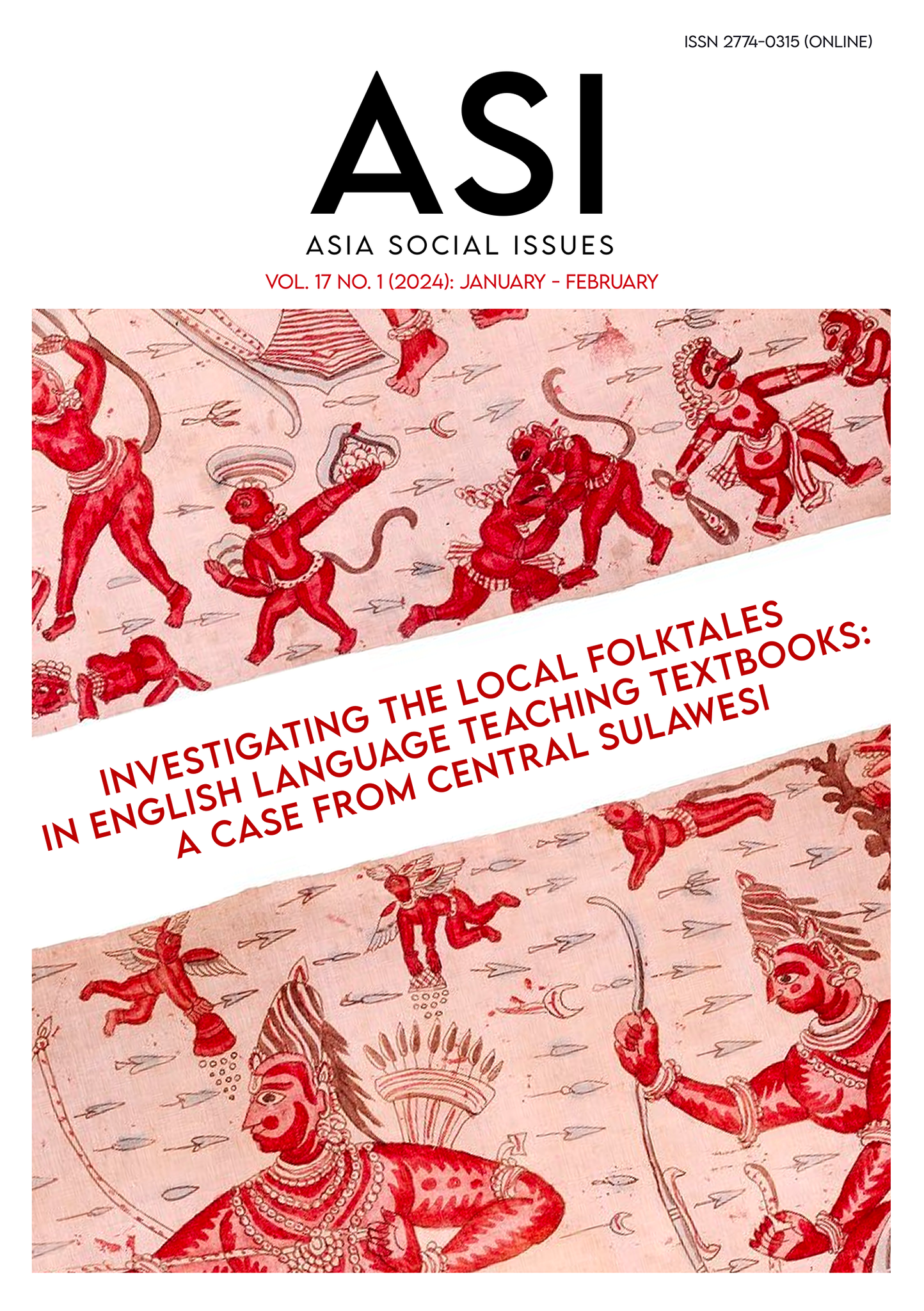Color Association to Emotions of Chinese and Thai University Students
Main Article Content
Abstract
Color association with emotions is culturally universal. The primary objective of this study is to identify cultural differences in color-emotion associations in two study groups that have received limited research attention: Thai and Chinese university students. The study used a questionnaire to collect data, then applied quantitative data analysis to address how colors are used to represent specific emotions in each respondent group. The study also investigated whether color association with emotions in those two study groups is significantly different. The findings suggest that some colors have a very strong association to one culture such as 100% of Thai respondents used red to represent anger. The chi square test revealed a cross-cultural effect in color association. The color association in emotions that the two cultures studied differ significantly is red for anger. Purple for fear, green and white for happiness and black for sadness.
Article Details

This work is licensed under a Creative Commons Attribution-NonCommercial-NoDerivatives 4.0 International License.
Copyright: CC BY-NC-ND 4.0
References
Amorntatkul, N., & Pahome, T. (2011). How sensory marketing applies to the hotel and restaurant industry in order to influence customer’s behaviour in Thailand (Master Thesis). Sweden: Maladalens University.
Babin, B. J., Hardesty, D. M., & Suter, T. A. (2003). Color and shopping intentions: The intervening effect of price fairness and perceived affect. Journal of Business Research, 56(7), 541-55.
Casas, M. C., & Chinoperekweyi, J. (2019). Color Psychology and Its Influence on Consumer Buying Behavior : A Case of Apparel Products. Saudi Journal of Business and Management Studies, 4(5), 441-456.
Chan, A. H. S., & Courtney, A. J. (2001). Color associations for Hong Kong Chinese. International Journal of Industrial Ergonomics, 28(3-4), 165-170.
Courtney, A. J. (1986). Chinese population stereotypes: Color associations. Human Factors, 28(1), 97-99.
Demir, Ü. (2020). Investigation of color-emotion associations of the university students. Color Research and Application, 45(5), 871-884.
Eagleman, D. M., & Goodale, M. A. (2009). Why color synesthesia involves more than color. Trends in Cognitive Sciences, 13(7), 1-5.
Fang, W., & Tong, Y. (2015). A Study on Symbol of Color Cultural in Web Page Design. Journal of Simulation, 3(4), 37.
Grzybowski, A., & Kupidura-Majewski, K. (2019). What is color and how it is perceived? Clinics in Dermatology, 37(5), 392-401.
Hutchings, J. (2004). Colour in folklore and tradition - the principles. Color Research and Application, 29(1), 57-66.
Jacob, L., Keown, C., Worthley, R., & Ghymn, K. (1991). Cross‐cultural colour comparisons: Global marketers beware! International Marketing Review, 8(3), 21-30.
Jacquot, M., Noel, F., Velasco, C., & Spence, C. (2016). On the colours of odours. Chemosensory Perception, 9(2), 79-93.
Jantathai, S., Sungsri-in, M., Mukprasirt, A., & Duerrschmid, K. (2014). Sensory expectations and perceptions of Austrian and Thai consumers: A case study with six colored Thai desserts. Food Research International, 64(1), 65-73.
Jonauskaite, D., Tremea, I., Bürki, L., Diouf, C. N., & Mohr, C. (2020). To see or not to see: Importance of color perception to color therapy. Color Research and Application, 45(3), 450-464.
Leekitvatana, P. (2017). Effects of nine workplace interior colors on Thai worker mood and color preferences (Thematic paper). Bangkok, Thailand: Mahidol University.
Lindgaard, G., Fernandes, G., Dudek, C., & Browñ, J. (2006). Attention web designers: You have 50 milliseconds to make a good first impression! Behaviour and Information Technology, 25(2), 115-126
Naz, K., & Epps, H. (2004). Relationship between color and emotion: A study of college students. College Student Journal, 38(3), 396-409.
Ng, A. W. Y., & Chan, A. H. S. (2018). Color associations among designers and non-designers for common warning and operation concepts. Applied Ergonomics, 70, 18-25.
Obeng, S. L., Kwabena Danso, D., Omari, J. A., Kuwornu-Adjaottor, J. E. T., & Danso, D. K. (2018). Colour In Fashion: Effects On Personality. Journal of Education Studies, 4(6), 353-376.
Reinecke, K., & Gajos, K. Z. (2014). Quantifying visual preferences around the world (pp. 11-20). In Proceedings of the Conference on Human Factors in Computing Systems. New York, United States: The ACM Digital Library is published by the Association for Computing Machinery.
Ruse, V., Faraon, M., & Wetterstrand, M. (2019). Hue combinations for the web: Towards a repertoire of design guidelines for combining color hues based on cultural background. (pp. 63-70). In Proceedings of the 5th International Conference on Computer and Technology Applications (ICCTA 2019). Istanbul, Turkey. The ACM Digital Library is published by the Association for Computing Machinery.
Satcharoen, K. (2017). The influence of colour on intention to adopt food delivery service mobile app (pp.87-91). In Proceedings of the 3rd International Conference on Communication and Information Processing. Tokyo, Japan: The ACM Digital Library is published by the Association for Computing Machinery.
Savavibool, N. (2020). Effects of color schemes on aesthetic response of the work environment. Kasetsart Journal of Social Sciences, 41(3), 581-586.
Seckler, M., Opwis, K., & Tuch, A. N. (2015). Linking objective design factors with subjective aesthetics: An experimental study on how structure and color of websites affect the facets of users’ visual aesthetic perception. Computers in Human Behavior, 49,375-389.
Tien-Rein, L. (2013). The color we use in our daily life-communicating with color (pp. 22-27). In Proceedings of the 1st Asia Color Association Conference. Pathum Thani, Thailand: Rajamangala University of Technology Thanyaburi.
Wang, B., Liu, S. Q., Kandampully, J., & Bujisic, M. (2020). How color affects the effectiveness of taste- versus health-focused restaurant advertising messages. Journal of Advertising, 49(5), 557-574.
Wu, Y., Lu, J., van Dijk, E., Li, H., & Schnall, S. (2018). The color red is implicitly associated with social status in the United Kingdom and China. Frontiers in Psychology, 9, 1-8.


